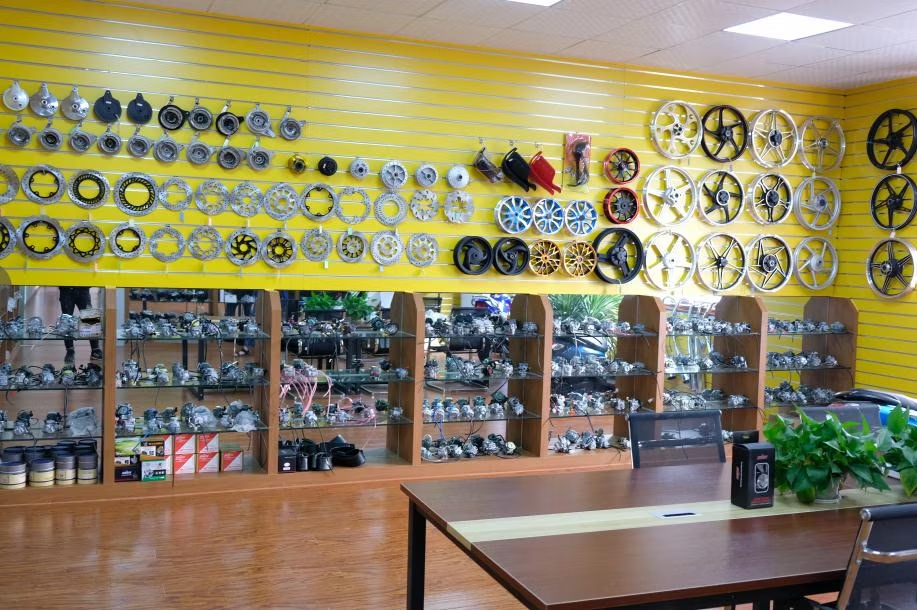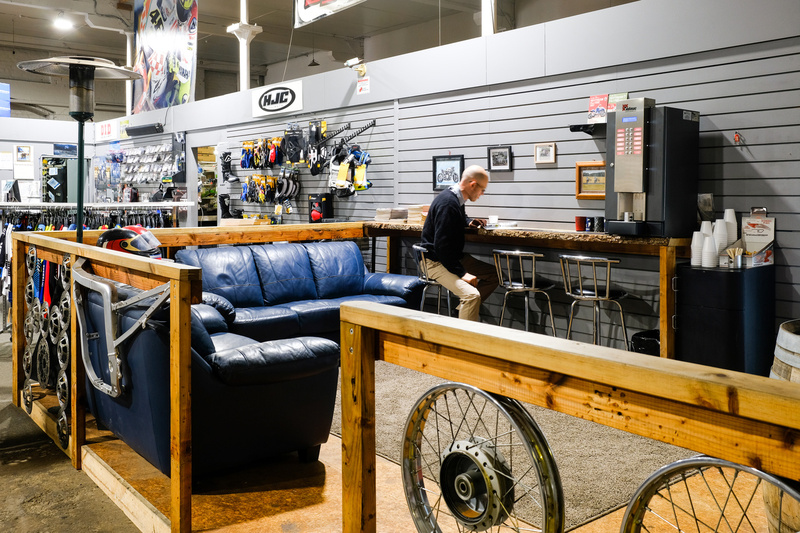Must-Have Motocross Gear: Elevate Your Riding Experience Today
Must-Have Motocross Gear: Elevate Your Riding Experience Today
Blog Article
Understanding the Crucial Parts of a Motorbike: A Comprehensive Overview for Lovers
For motorbike enthusiasts wanting to boost their riding experience and ensure their bikes run efficiently, recognizing the essential parts of a motorbike is extremely important. Each aspect, from the engine's intricate operations to the vital role of the stopping mechanisms, not only affects efficiency but also safety and comfort. This guide will go through the basic components that every cyclist need to be familiar with, enabling informed choices in both upkeep and potential upgrades. As we begin this exploration, one must ask: exactly how does each component engage to produce the smooth ride every enthusiast looks for?
Engine Components

The camshaft plays an important role in regulating the timing of the engine's valves, ensuring the specific opening and closing needed for reliable fuel and air intake, along with exhaust expulsion. This timing is crucial to preserving optimal engine performance and efficiency. Additionally, the carburetor or fuel injection system, depending upon the bike version, is liable for blending air with gas in the appropriate proportion for combustion.
The cooling system, either air or liquid-based, functions to keep the engine's temperature level within functional limitations, protecting against overheating and ensuring longevity - mx parts nz. Each component, thoroughly created and integrated, adds to the smooth operation of the engine, defining the bike's power result and overall efficiency
Transmission System
Essential to the motorcycle's functionality, the transmission system guarantees effective power transfer from the engine to the wheels. This system comprises several essential components, consisting of the clutch, gearbox, and last drive, each playing an essential function in converting the engine's power into motion. The clutch, commonly operated by a hand lever, serves to involve and disengage the engine from the transmission, permitting smooth equipment adjustments and regulated velocity.
The transmission, often referred to as the transmission appropriate, consists of a collection of equipments that riders can manually move via to adjust the bike's speed and torque outcome. These gears are arranged in a sequence that makes it possible for the motorcycle to speed up efficiently and preserve optimal engine efficiency across various speeds. Most motorcycles utilize a consecutive transmission, needing the cyclist to move equipments in an established order.
Braking Mechanisms
While comprehending the transmission system is vital to harnessing a motorbike's power, similarly vital is the capacity to manage and quit that power successfully, which is where braking mechanisms come into play. Brakes are critical for safety and security and efficiency, supplying the motorcyclist with the required control to navigate various surfaces and conditions. Typically, motorcycles feature 2 sorts of stopping systems: disc brakes and drum brakes.
Disc brakes are a lot more prevalent in modern motorbikes as a result of their premium performance. They include a brake disc, caliper, and pads. When activated, the caliper presses the brake pads against the rotating disc, converting kinetic power right into heat, consequently reducing the wheel. This system uses better warm dissipation, constant performance, and enhanced quiting power, especially in wet problems.
On the other hand, drum brakes, though less typical, are still found in some motorcycles. They work by pressing brake shoes versus the inner surface area of a drum connected to the wheel. While generally much less reliable in warmth dissipation and stopping power, drum brakes are simpler and much more cost-effective.
Understanding these braking systems' nuances permits motorcyclists to keep their bikes properly and appreciate the engineering that ensures risk-free and efficient stopping.
Suspension and Steering
Suspension and steering systems are vital elements that dramatically influence a motorbike's handling and ride comfort. The shock absorber, consisting of forks at the front and shock absorbers at the back, soaks up roadway abnormalities, improving stability and control. Front forks, generally telescopic or upside down, compress and rebound to minimize influences, while back shock absorbers maintain tire contact with the roadway, important for traction and safety.
Guiding, focused around the handlebars, attaches the biker to the motorcycle's directional control. The steering head bearings ensure smooth operation, permitting specific ability to move. Correct alignment and upkeep of these bearings are important for predictable guiding reaction and decreasing cyclist exhaustion.
The suspension's adjustability is another crucial element; preload, damping, and rebound settings enable modification to fit various riding conditions and designs. This flexibility is necessary for optimizing efficiency, whether navigating city streets or tackling tough tracks. Innovations like electronic shock absorber offer real-time modifications, improving trip high quality throughout diverse terrains.

Electric Systems
After making certain a smooth and controlled trip with reliable suspension and guiding systems, attention turns to the electric systems, an essential element of modern motorbikes. These systems play an essential role not just in beginning the engine however likewise in powering different parts that enhance the functionality and safety and security of the motorbike.
At the heart of a motorbike's electric system is the battery, which stores electric power essential for starting the engine and powering complementary systems - mx parts nz. The alternator or generator, paired with the dot helmets near me rectifier-regulator, makes sure the battery continues to be billed while the motorbike functions, converting mechanical power into electrical energy and maintaining voltage levels
The ignition system, another essential part, is responsible for firing up the air-fuel mixture in the engine's cylinders. Modern bikes often utilize a digital ignition system, offering higher effectiveness and integrity contrasted to standard systems.
Lighting systems, including fronts lights, tail lights, and signs, are additionally essential, guaranteeing visibility and security for the motorcyclist. Extra digital components such as sensing units, control systems, and displays add to advanced features like i was reading this gas shot management, anti-lock stopping systems (ABDOMINAL), and electronic control panels, additionally improving the riding experience.
Final Thought
A detailed comprehension of a motorbike's essential components, including the engine, transmission system, braking mechanisms, suspension, steering, and electrical systems, is indispensable for enthusiasts aiming to optimize safety and security, convenience, and efficiency. Proficiency of these elements allows for notified decisions relating to upkeep and upgrades, ultimately improving the riding experience. By integrating this expertise, bikers can ensure their motorbikes run at peak efficiency and reliability, thereby optimizing both pleasure and long life of their vehicles.
For bike lovers looking to boost their riding experience and ensure their bikes run smoothly, recognizing the crucial parts of a bike is extremely important.Important to the motorbike's performance, the transmission system makes sure reliable content power transfer from the engine to the wheels.While understanding the transmission system is vital to utilizing a motorcycle's power, just as vital is the ability to manage and stop that power successfully, which is where braking mechanisms come right into play. Commonly, bikes include 2 types of braking systems: disc brakes and drum brakes.
A detailed comprehension of a motorbike's important parts, including the engine, transmission system, braking systems, suspension, guiding, and electrical systems, is vital for lovers aiming to maximize comfort, safety and security, and performance.
Report this page